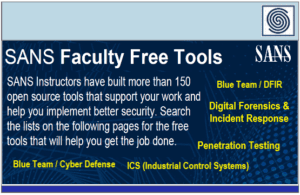Cisco has released free software updates that address the vulnerability described in this advisory. Customers with service contracts that entitle them to regular software updates should obtain security fixes through their usual update channels.
Customers may only install and expect support for software versions and feature sets for which they have purchased a license. By installing, downloading, accessing, or otherwise using such software upgrades, customers agree to follow the terms of the Cisco software license:
https://www.cisco.com/c/en/us/products/end-user-license-agreement.html
Additionally, customers may only download software for which they have a valid license, procured from Cisco directly, or through a Cisco authorized reseller or partner. In most cases this will be a maintenance upgrade to software that was previously purchased. Free security software updates do not entitle customers to a new software license, additional software feature sets, or major revision upgrades.
The Cisco Support and Downloads page on Cisco.com provides information about licensing and downloads. This page can also display customer device support coverage for customers who use the My Devices tool.
When considering software upgrades, customers are advised to regularly consult the advisories for Cisco products, which are available from the Cisco Security Advisories page, to determine exposure and a complete upgrade solution.
In all cases, customers should ensure that the devices to be upgraded contain sufficient memory and confirm that current hardware and software configurations will continue to be supported properly by the new release. If the information is not clear, customers are advised to contact the Cisco Technical Assistance Center (TAC) or their contracted maintenance providers.
Customers Without Service Contracts
Customers who purchase directly from Cisco but do not hold a Cisco service contract and customers who make purchases through third-party vendors but are unsuccessful in obtaining fixed software through their point of sale should obtain upgrades by contacting the Cisco TAC: https://www.cisco.com/c/en/us/support/web/tsd-cisco-worldwide-contacts.html
Customers should have the product serial number available and be prepared to provide the URL of this advisory as evidence of entitlement to a free upgrade.
Cisco ASA, FMC, and FTD Software
To help customers determine their exposure to vulnerabilities in Cisco ASA, FMC, and FTD Software, Cisco provides the Cisco Software Checker. This tool identifies any Cisco security advisories that impact a specific software release and the earliest release that fixes the vulnerabilities that are described in each advisory (“First Fixed”). If applicable, the tool also returns the earliest release that fixes all the vulnerabilities that are described in all the advisories that the Software Checker identifies (“Combined First Fixed”).
To use the tool, go to the Cisco Software Checker page and follow the instructions. Alternatively, use the following form to search for vulnerabilities that affect a specific software release. To use the form, follow these steps:
- Choose which advisories the tool will search-all advisories, only advisories with a Critical or High Security Impact Rating (SIR), or only this advisory.
- Choose the appropriate software.
- Choose the appropriate platform.
- Enter a release number-for example, 9.16.2.11 for Cisco ASA Software or 6.6.7 for Cisco FTD Software.
- Click Check.
Note: For Cisco 3000 Series Industrial Security Appliances (ISAs) that are running Cisco ASA Software, Cisco ASA Software Release 9.16.4.67 has been deferred and replaced by Release 9.16.4.70.
For instructions on upgrading a Cisco FTD device, see the appropriate Cisco FMC upgrade guide.
Additional Resources
For help determining the best Cisco ASA, FMC, or FTD Software release, see the following Recommended Releases documents. If a security advisory recommends a later release, Cisco recommends following the advisory guidance.
Cisco ASA Compatibility
Cisco Secure Firewall ASA Upgrade Guide
Cisco Secure Firewall Threat Defense Compatibility Guide



















































